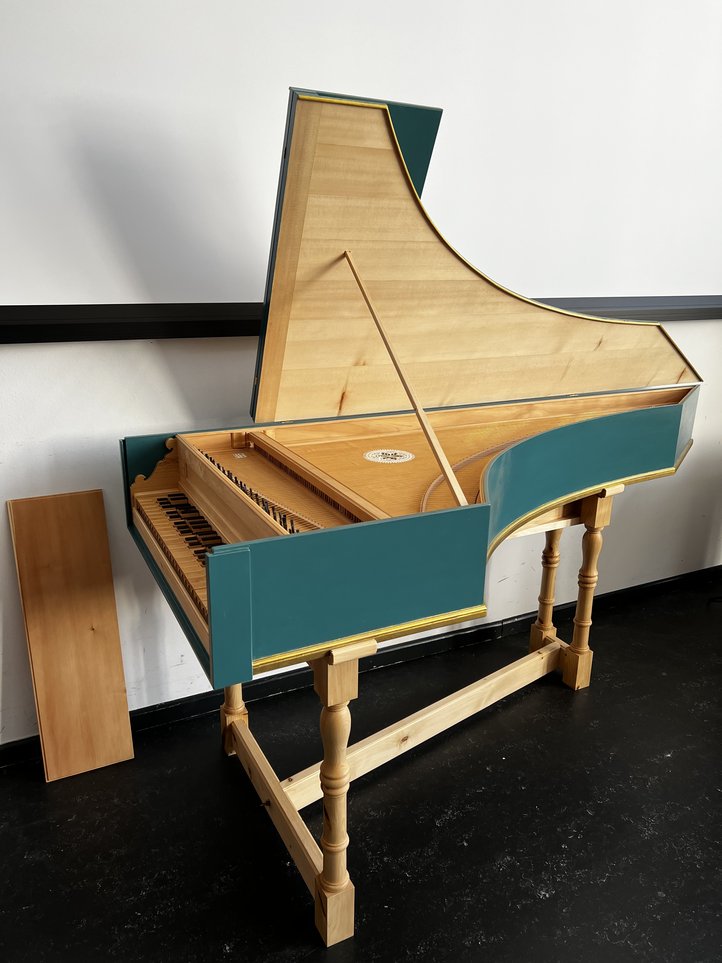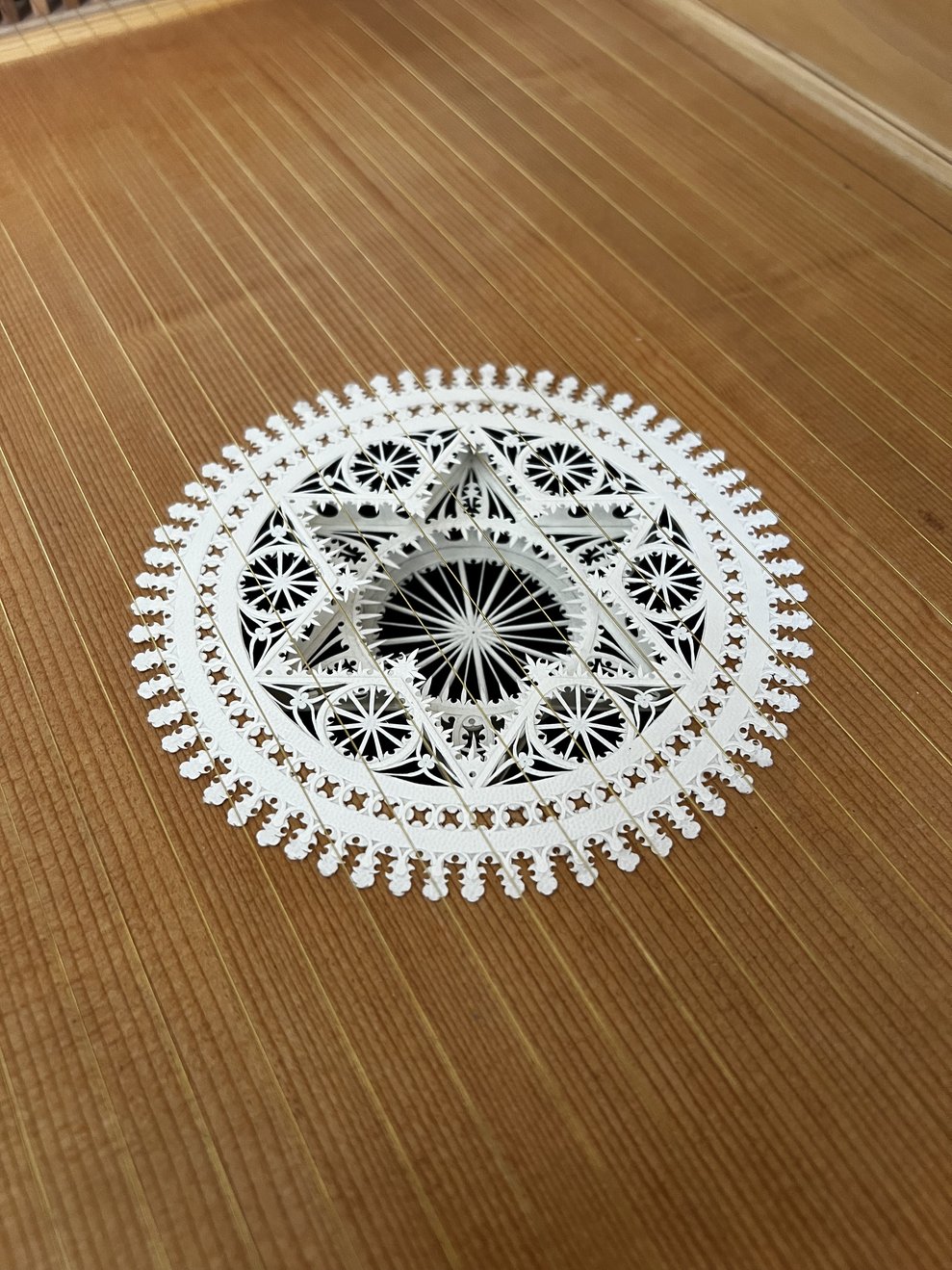Since May 2025, the University of the Arts Bremen has been home to a so-called cembalo cromatico – an extraordinary microtonal keyboard instrument with 19 keys per octave. Commissioned by Prof. Dr Christoph Prendl, the instrument was custom-built by Dietrich Hein in Oldenburg. It is the only replica to date of an original instrument crafted in 1631 by Francesco Fabbri, now housed in the Germanisches Nationalmuseum in Nuremberg.
The seven additional upper keys per octave are used to differentiate between pitches such as C sharp/D flat, D sharp/E flat, E sharp/F, and so forth – tones that differ from one another by microtonal intervals in certain historical unequal temperaments.
What makes the newly built instrument truly unique worldwide is a specially developed electronic module featuring lifting magnets and motion sensors. These not only register key movements but can also trigger the jacks, thereby plucking the strings. Unlike with human performance, there are no technical limitations to what can be played. A specially adapted MIDI interface allows performances to be recorded and further processed using notation software or a digital audio workstation. Conversely, digitally generated music can also be played back directly on the instrument.
For students at the University of the Arts Bremen, this instrument represents a significant enrichment of their education: it allows for historically informed performances of chromatic repertoire from the 16th and 17th centuries. This includes madrigals by Nicola Vicentino and Don Carlo Gesualdo, as well as keyboard works by Giovanni Maria Trabaci, Girolamo Frescobaldi and Johann Jakob Froberger. The instrument also opens up new possibilities in music theory and aural training, enabling students to engage deeply with tone systems, temperaments and intonation. Furthermore, its potential for contemporary music is considerable – not least due to the electronic module, which allows microtonal instruments with electronic sound generation to be played live.
Concerts and workshops featuring the cembalo cromatico are planned for the 2025/26 academic year.

